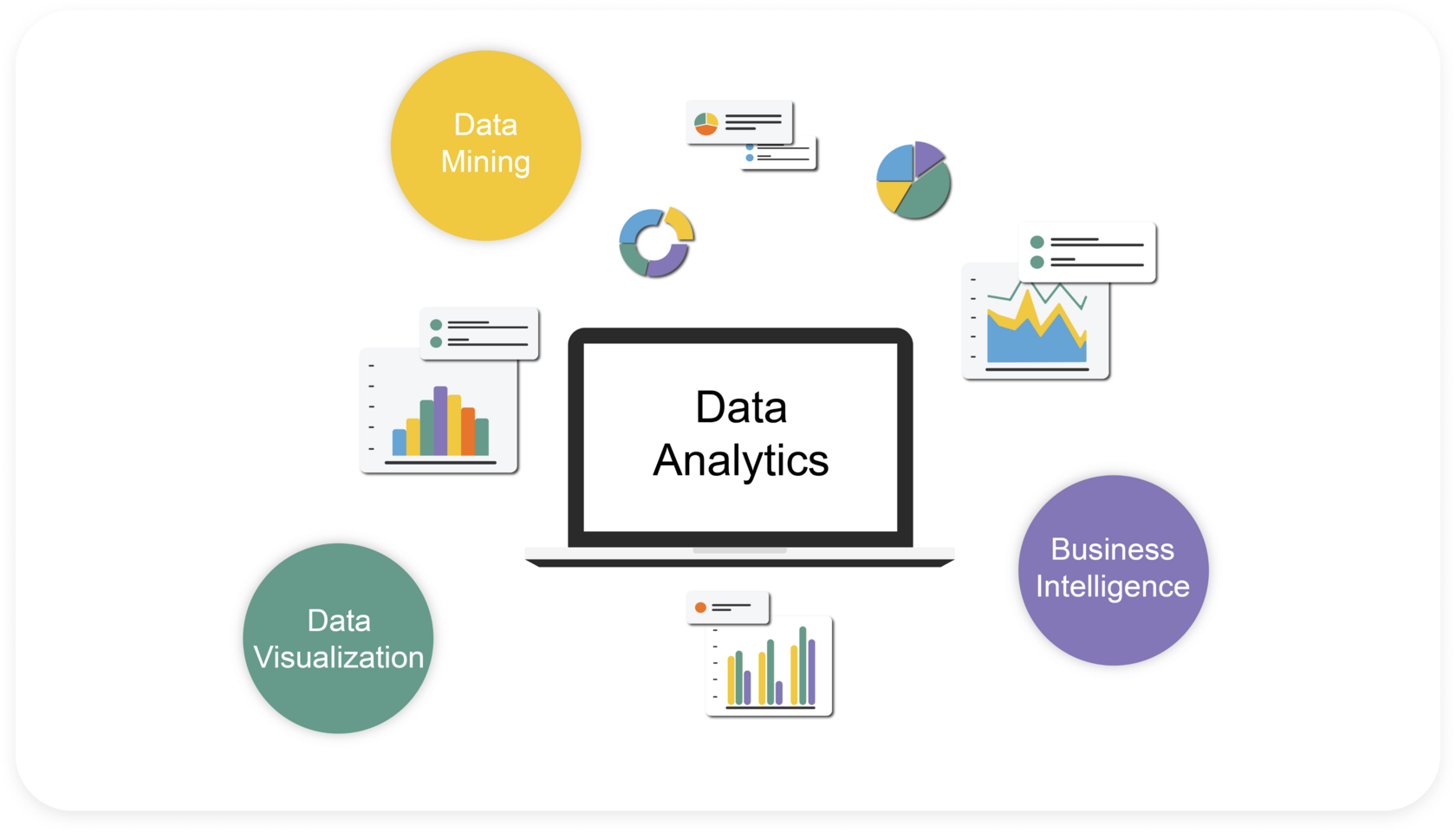Increase Effectiveness and Success Through Information Analytics
In today's data-driven landscape, companies are progressively identifying the critical role of data analytics in boosting operational performance and earnings. By methodically examining information, organizations can uncover vital understandings that inform critical decisions, simplify processes, and tailor client experiences.
Understanding Data Analytics
In today's data-driven landscape, recognizing data analytics is necessary for companies aiming to improve functional efficiency and drive success. Information analytics entails the systematic computational evaluation of information collections to uncover patterns, connections, and understandings that educate decision-making. By employing different strategies, such as analytical evaluation, artificial intelligence, and anticipating modeling, companies can transform raw data into actionable knowledge.
The procedure typically begins with data collection, where pertinent details is gathered from several resources, consisting of transactional data sources, consumer communications, and market fads. This information is after that cleansed and arranged to ensure accuracy and consistency. Once the data is prepared, analytical tools and software are utilized to check out and imagine the info, making it possible for stakeholders to identify fads and abnormalities.
Inevitably, understanding data analytics encourages companies to make enlightened choices based on empirical evidence instead than instinct. It promotes targeted approaches that can maximize source allowance, enhance client satisfaction, and boost total efficiency. As companies progressively recognize the value of data-driven insights, a strong grip of information analytics ends up being a vital expertise for leaders and teams alike, placing them for sustained success in an affordable atmosphere.

Secret Benefits for Services
Businesses that utilize data analytics can open a plethora of advantages that significantly boost their operations and productivity. One of the main advantages is enhanced decision-making. Information analytics offers workable insights stemmed from real-time information, enabling organizations to make educated selections that line up with market needs and consumer choices.

Additionally, information analytics cultivates enhanced customer experiences. By comprehending client habits and preferences, services can customize their offerings, bring about raised satisfaction and commitment. This personalized approach typically leads to higher conversion rates and repeat business.
Furthermore, data analytics makes it possible for organizations to recognize arising fads and chances. By staying in advance of the contour, organizations can maximize new markets and innovations prior to their rivals.
Executing Data-Driven Techniques
Successful execution of data-driven methods needs an extensive understanding of both readily available data and organizational objectives resources. Organizations needs to initially define their purposes clearly, ensuring placement between data campaigns and critical goals. This clarity makes it possible for groups to focus on pertinent metrics and insights that drive decision-making.
Following, companies need to examine their existing data facilities. This involves examining data top quality, ease of access, and assimilation abilities. Top quality information is important for exact analysis, as bad information can result in illinformed strategies and lost resources. Organizations should develop processes for data collection, cleansing, and monitoring to maintain information honesty.
Moreover, fostering a data-driven culture is vital. Staff members at all levels must be urged to utilize information in their day-to-day procedures. Training programs and workshops can improve information proficiency, encouraging team to make informed decisions based on analytical insights.
Tools and Technologies Introduction
A durable collection of modern technologies and devices is crucial for companies intending to harness the complete possibility of information analytics. These devices promote the collection, handling, and visualization of information, making it possible for organizations to acquire workable understandings.
At the foundational level, data management systems such as SQL data sources and NoSQL systems offer efficient data storage and retrieval capabilities. For data processing and analysis, shows languages like Python and R, together with structures such as Apache Spark, allow intricate computations and device discovering applications.
Visualization tools, including Tableau and Power BI, change raw information into intuitive visual styles, making insights accessible to stakeholders in all degrees. Additionally, cloud-based systems like Google Cloud and AWS use scalable storage and processing remedies, fitting the growing quantities of data organizations run into.
For sophisticated analytics, predictive modeling and AI-driven remedies are progressively adopted, permitting business to anticipate patterns and boost decision-making procedures. Integrating these devices into existing operations is critical; companies that effectively take advantage of this modern technology can dramatically improve functional effectiveness and drive productivity. Therefore, spending in the right tools and modern technologies is a tactical vital for any data-driven organization.
Study of Success
Leveraging data analytics has led countless organizations to attain remarkable improvements in effectiveness and productivity. One noteworthy situation is a big retail sites chain that applied anticipating analytics to maximize stock management. By examining historic sales information and consumer fads, the company decreased excess stock by 30%, causing substantial price financial savings and improved capital.
Another example can be found in the manufacturing industry, where a leading automobile supplier made use of data analytics to enhance its production procedures. By keeping an eye on device performance in real-time, the organization identified bottlenecks and inefficiencies, causing a 20% rise in general devices efficiency (OEE) This not only increased production prices yet additionally lessened downtime and maintenance expenses.

These study illustrate just how data analytics can drive calculated decision-making, optimize processes, and inevitably enhance both performance and success throughout various markets.
Verdict
In conclusion, the integration of data analytics into company operations presents more info here substantial opportunities for enhancing efficiency and success. By systematically evaluating data, organizations can identify inefficiencies, maximize consumer experiences, and make educated choices.
In today's data-driven landscape, comprehending data analytics is vital for organizations aiming to enhance functional performance and drive earnings. Data analytics involves the organized computational evaluation of data collections to reveal patterns, connections, and insights that educate decision-making. Information analytics offers actionable insights acquired from real-time data, allowing organizations to make enlightened options that align with market useful site needs and customer preferences.
High-grade information is vital for precise evaluation, as bad data can lead to illinformed methods and squandered resources. Organizations has to establish procedures for data collection, cleansing, and administration to maintain data honesty.